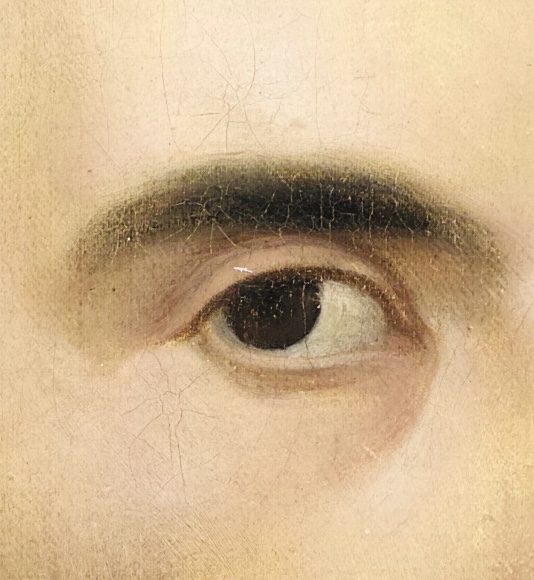Jean-Léon Gérôme
1824 – 1904
French School
Portrait of the painter, inventor, journalist and photographer Louis-Godefroy de Lucy de Fossarieu, 1847
Oil on canvas
56 x 47cm (re-lined).
Original stretcher.
Inscription around perimeter of oval: L.G. DE LUCY. 1847 / ANNO AETATIS SUAE XXVII px (L.G. DE LUCY. 1847 / PICTURED AT TWENTY SEVEN YEARS OF AGE)
Old annotation in india ink on median stretcher bar: Fossarieu par Gérôme
Jean Léon Gérôme needs little introduction. As one of the glories of French, nineteenth century academic painting, his work is conserved in major museums and collections the world over.
The present portrait, by the twenty-seven year old artist, was executed in the year that Gérôme received official recognition at the Paris Salon for his painting, The Cock Fight (Le Combat de Coqs, Orsay Museum), a masterpiece that catapulted him to artistic fame and established him as the head of the Neo-Grec Movement.
The subject of the portrait, the twenty-seven-yearold Louis Godefroy de Lucy de Fossarieu (1820 -1892), artist, photographer, inventor and political activist, was a personage of consequence. As the partitives in his name suggest, his family belonged to a wealthy, aristocratic class of French settlers in Martinique called the Békés. Sent by his parents to Paris as a young man, De Fossarieu received training as a painter in the atelier of Paul Delaroche. There he befriended fellow student, Gérôme. De Fossarieu possibly met up with Gérôme and Delaroche on their voyage through Italy a short time later, since he was residing in Rome at the time the two men were passing through. The early date of execution and the Latin inscription that encircles Gérôme’s portrait may indicate such an encounter.
De Fossarieu eventually abandoned painting, in favor of photography. An early practitioner, he was among the first to document living animals at the Jardin d’Acclimatation de Bois de Boulogne – a risky
enterprise in that pioneering era, since the animals moved about freely in their enclosures and were a great deal faster than the slow emulsions that recorded them. De Fossarieu may well have shared his enthusiasm and knowledge with Gérôme, who employed photography as an aid in painting from his earliest days and who highly recommend its use to his pupils. In addition to photography, de Fossarieu found the time to explore other creative pursuits. He invented and patented a gas lantern and a telegraphic system. Politically active as a journalist and part of the abolitionist movement in Martinique, he also addressed the social injustices in his native land.
Gérôme’s elegant portrait of de Fossarieu documents the handsome twenty-seven-year-old, whose penetrating gaze and serious mien give his features their uncommon intensity. As with many portraits of artists painted by fellow artists, the work may have been part of an exchange between the two colleagues. A calotype in the museum in Vesoul, dating from the same era, is the earliest recorded photographic portrait of Gérôme.
It was fastidiously conserved by the painter all his life and it may well be Fossarieu’s work.
Gérôme strikes a similar pose, but faces three quarters left (the sitters in both images face each other.) His intense expression is similar to Fossarieu’s and the neck-wear of both subjects is virtually identical. Where the painting is concerned, the inscription around its perimeter begins with the letters “L.G.”, those of the sitter’s first names (Louis-Godefroy) and the painter’s last names (Léon-Gèrôme.) It was entirely in keeping with Gérôme’s sense of humor (as with Schubert, who obliges musicians to cross and interlock arms during the coda of his four hand piano work, the Rondo in D major, D. 608: “Notre amitié est invariable”.) to put the initials in common to double use, an in-joke that underscored the artists’ “unwavering friendship”.



